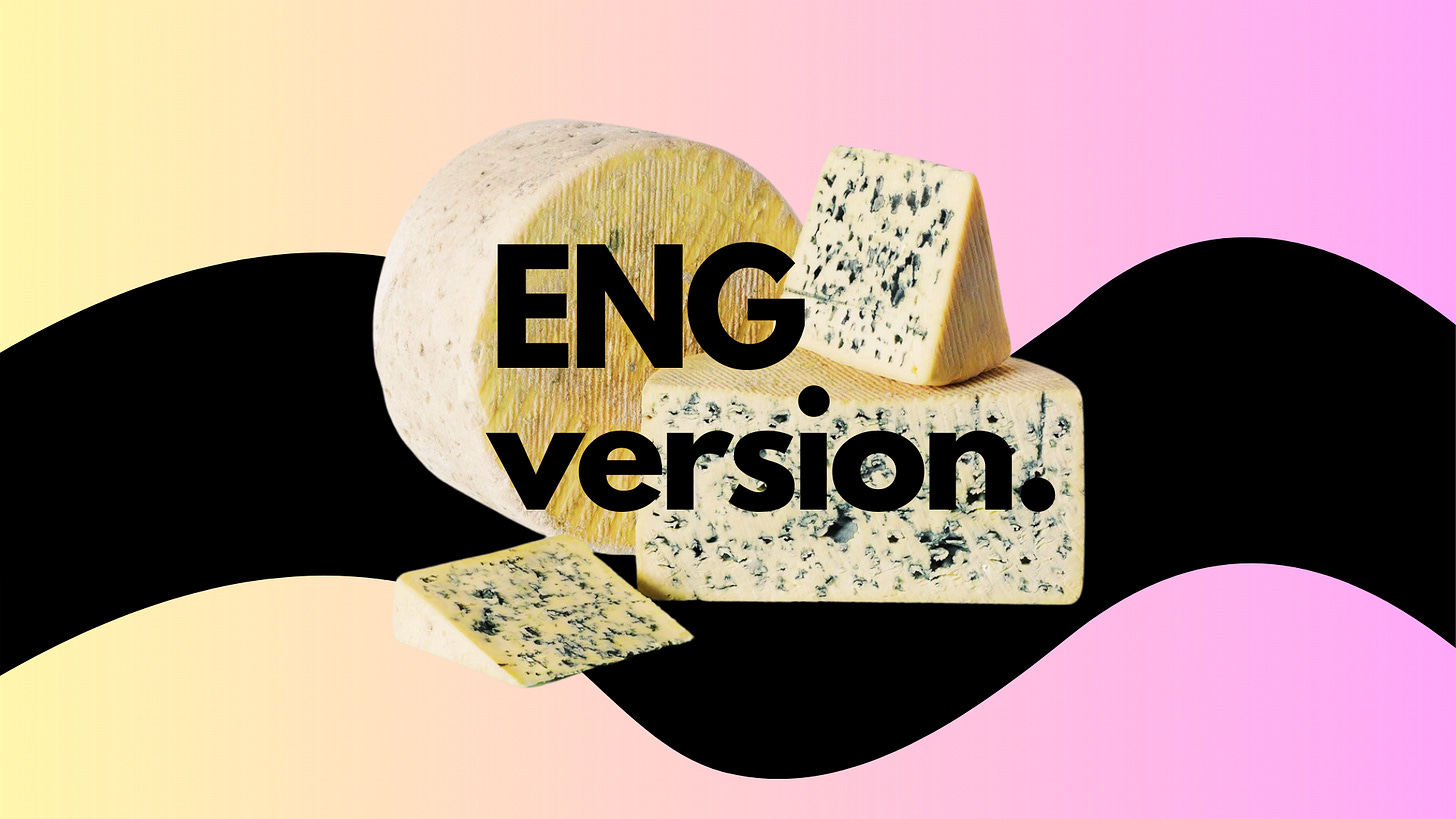Your quintessential blue cheese if you have mixed feelings about this type of cheeses
A guide for undecided people who want to be led by the hand and finally choose their perfect blue.
Either you love or hate blue cheese.
Or at least, that's what is believed.
Fortunately, the world is not black & white, and there exists a scale of grays, the realm of those who sometimes hear 'yes' and other times 'no' within themselves when the blue veins appear.
This guide is for these people, who have come here with the hope of finding the blue cheese that will click with their taste buds.
If someone sent you this newsletter and you'd like to continue receiving cheese-related topics in your inbox, subscribe to ENIE.
The flavor spectrum of blue cheeses
When you find yourself in this middle ground of conflicting feelings, the spectrum of taste sensations that blue cheeses often have, may make you grimace or nod your head in agreement.
Reviewing the (very) general range of flavors that these cheeses develop, we know they offer sensations of:
Sweet
Fan 🤗 No fan 🫥 You 🙂
Salty
Fan 😉 No fan 😑 You 😬
Mold
Fan 😃 No fan 😖 You 😶
Hazelnut
Fan 🫠 No fan 🤔 You 😌
Ammonia
Fan 🙃 No fan 😨 You 😶🌫️
Piquant
Fan 🥹 No fan 🫨 You 😮💨
Fan, not a fan, or part of the undecided league, there's no doubt that you'll have to add an important opinion about this. Leave a comment.
Now that you have a broad idea of the perceptions that could appear more or less accentuated in different blue cheeses (keeping their distances), let's simplify the repertoire to help you locate the target blue for your taste buds.
The compass to find the blue cheese that will make your taste buds sigh
You'll need to create a scale with an imaginary needle, on which you'll position four sensations ubiquitous in all blue cheeses: sweet, ammonia, salty, and moldy.
On the left end, you'll place the sweetest sensation you remember from milk, and on the opposite end, you'll place the most ammoniacal sensation your memory can recreate.
The left end will be that of subtle sensations, while the right end will be that of the most pronounced ones.
In the center, equidistant between the extreme sensations, you'll place the salty sensation.
And a quarter of the way from the sweet and a quarter of the way from the ammoniacal, you'll place the moldy sensation.
Gráficamente, the scale on which your imaginary needle will measure will be more or less like this:
Surely someone else would benefit from creating their very own imaginary compass to test blue cheeses. Send them the instructions on how to do it.
It often happens that the compass of those not so friendly to blue cheeses draws the needle towards the end of pronounced flavors, leaning towards the ammoniacal, and their response consequently is rejection.
In the opposite direction, the needle of the not so convinced points towards the left flank of intermediate and subtle gradations, opening up new opportunities for enjoying this type of cheese. There is hope.
Use the compass to find the blue cheese you truly need
When you try your next blue cheese, activate the imaginary compass in your brain and visualize whether the needle moves to the right or to the left.
Keep a record for your records of where the needle is when a blue cheese captivates you and where it stops when the flavors scandalize you.
As a general tip, blue cheeses with more pronounced sensations will always be those that ▹contain more penicillium roqueforti, the characteristic mold of blue veins; ▹blend different types of milk, including cow-sheep-goat; ▹have had more aging time in caves or cellars.
The more blue cheeses you try, the more chances you'll have to use and fine-tune your compass.
It's the best way to keep it from rusting and to keep it calibrated so it can guide you closer to your target cheese: your blue of blues.
*
Salut and the finest cheese,
Adriana






